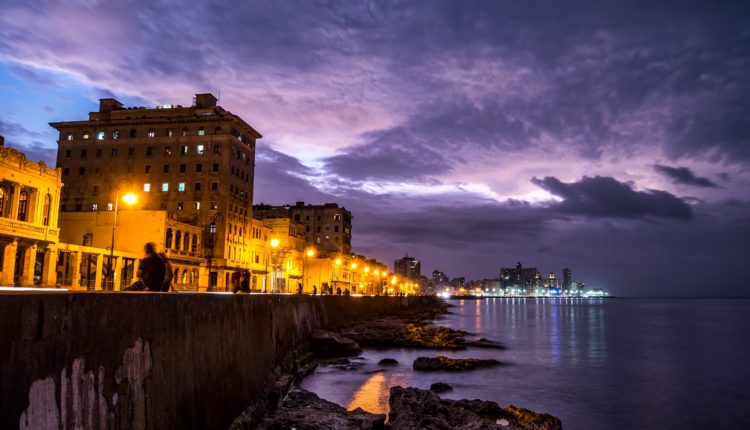
Where are they now?
It was a week and a day before Christmas 2014. On that Dec. 17, President Barack Obama, at around noon time, had announced changes to Cuba policy on national television; simultaneously, Cuban President Raúl Castro had gone on Cuban television to announce steps taken with the Obama government to begin the long road of normalization. Both leaders realized, and stated, it would be a slow and careful process, but it was a moment of high hopes and big expectations.
Fast forward to less than two months before Christmas 2019. There are new presidents in both Cuba and the United States. And the one on the U.S. side sees Cuba as simply a pawn that he feels might help win him a 2020 election in Florida, a state he needs if he expects to return to the White House in 2021. As a result, Donald Trump, with the advice of Sen. Marco Rubio and Rep. Mario Diaz-Balart, has helped to reverse the dynamic forward motion the rapprochement had taken starting in 2015.
I still remember a column I wrote in January 2017, “Long before Obama, bridges to Cuba were being built”. At the time I had taken issue with an op-ed piece that had appeared in the Miami Herald written by two young men of Cuban heritage that implied that before Obama little had been done that helped create the Dec. 14 moment.
They stated then that “Obama began charting a new course on Cuba in 2009…” Also adding that because of President Obama, and the work of these young persons who had helped to elect the president, “more than 400,000 Cuban Americans a year began exercising their franchise to see and help their families in Cuba.”
I reminded the writers that “bridge builders to Cuba have been around since the 1960s. There are differences between these early engineers of peaceful dialogue and those that are being heralded today. Surely, though, both have played an important role in the advances made in the relationship between Cuba and the U.S. But we must NOT forget that as recently as the past decade, many of these persons were often harassed, threatened, and some even murdered.”
As for the 400,000 Cuban Americans that began “to see and help their families,” apparently the two young Herald op-ed writers were unaware that as early as 1979, charter flights had been established between the U.S. and Cuba exactly for that reason — family reunification.
That January in 2017 I called Giancarlo Sopo, one of the two Herald writers, first to congratulate him on the article, and secondly to emphasize that he had forgotten the pioneers, some who had given their lives, in order to establish a more peaceful and coherent relationship with family members on the Island. I found his response disheartening and arrogant. Basically, and not in these words, but what I got from the conversation was that these folks were convinced that not until Obama had there been any movement on Cuba. Anything before that… didn’t count.
I do not have to tell you what has happened after Trump’s election in 2016. As for our relationship with Cuba since 2017, it increasingly looks worse by the month. It is starting to remind many of that horrible time when we dealt with George W. Bush’s administration, which had the audacity to define the “Cuban family” and limit visits to one every three years.
And as we’ve seen Trump and his henchmen deny basic human rights — on both sides of the straits — I have begun to question many of those same Cuban Americans who, together with Obama, had solved the U.S.-Cuba problem, according to some of them, at one fell swoop — a simple call made by the American president.
Here I must lay some blame on the Cuban government too. Right after the Obama-Raúl television appearances there was euphoria. Cuban-Americans, many with very deep pockets, now had decided to travel to the Island. Many met with Cuban officials and saw great opportunities going forward.
Cuba became the next big thing. A place where everything was needed and business possibilities seemed endless. All true.
Cuban officials put on hold persons who had stood by them for years, persons who had worked to change policy — some for 30, 40 years — suddenly giving preference to those arriving Cuban American multi-millionaires promising to spend millions on the Island.
In the end most of the money promised never materialized. First because it was illegal, according to U.S. law. Second, because even if there were persons willing to skirt the law, Cuban officials seemed timid, unwilling to take that next step.
At that moment Cuba stared out the window of possibilities for two years, but refused to march forward. It was a wasted opportunity to exploit that aforementioned euphoria. A moment to tie down interested parties who today would be working on their new partner’s behalf, and against the Trump administration.
In the 1980s, and 90s, and the 2000s before Obama, charter companies made money creating a bridge between families here and there. They were often criticized and ostracized for their dealings with Cuba, and for profiting from it. But when they had to spend the money they had earned building those bridges, they spent hundreds of thousands of dollars, millions actually, fighting a U.S. government hell-bent on sinking an island because it refuses to genuflect before Uncle Sam.
Those days are gone. But I dare ask: Where are the Obama era millionaires from Miami now?
They should be leading the charge against an administration willing to sink an island in order to get its way. Where are those young Obama era Cuban American voters who claimed to have charted a new course on Cuba?
I guess that without an American president leading, little can be expected of them.


